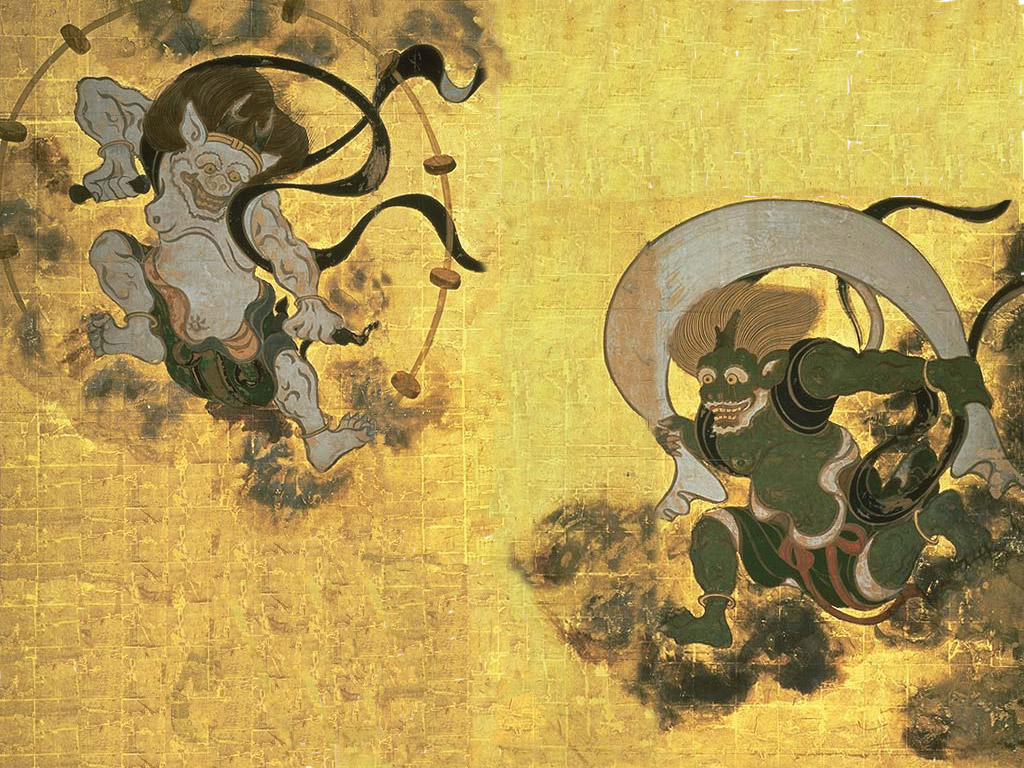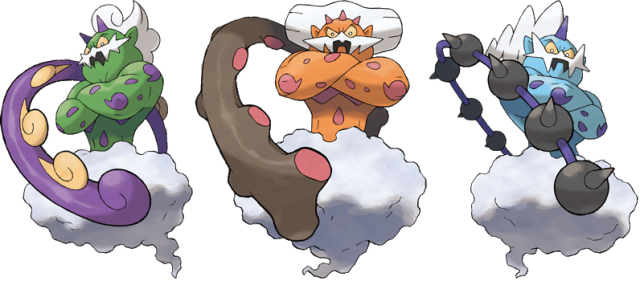
To go along with this week’s mythology theme, I thought it would be a good idea to explore the mythical roots of a few certain legendary Pokémon. Since Black and White were just released, we’ll be exploring the roots of the new kami (god) trio of Thundurus, Tornadus, and Landorus. Each of these Pokémon has roots that date back to around seventh century Japan, with connections to some of the oldest Shinto gods. While Zekrom and Reshiram are based on yin and yang from Taoism, I felt like the origins of the kami trio wouldn’t be as widely known.
Tornadus is the first of the kami trio that we’ll be examining. Tornadus’ image and power are based on the Japanese god of wind, Fūjin. Fūjin himself has his own origins with the Greek god Boreas. According to Japanese lore, he was present at the birth of the world, and the winds that flew from his bag allowed the sun to shine. He’s typically depicted as a demon with green skin, with an appearance that is similar to that of Tornadus in Black and White, though the games did take some artistic liberties.
Much like his Shinto counterpart in Japan, Tornadus flys around Unova creating storms. He can fly at over 200 miles per hour, and his breath is strong enough to destroy homes, hence the play on “tornado.” Despite being part of the kami trio in Pokémon, he only has connections to one of them through Shinto beliefs, and that would be with Thundurus, or Raijin as he is called in Shinto.

Raijin is the god of thunder and storms according to Japanese mythology. He is usually depicted as beating on a drum to create thunder. According to folk legend in Japan, he will descend from the clouds and take children away. While I’ve yet to see Thundurus do anything similar in the Pokémon games, that doesn’t mean he wouldn’t. In Japanese legend, Fūjin, along with Raijin, were evil demons that battled the Buddha. They ended up losing the battle, and have worked as gods ever since.
The final piece of the kami trio is the Pokémon Landorus, who is master over the other two in Black and White. Landorus is actually based on the Japanese god of fertility, Inari. Inari has been depicted as both a male and a female, and worship began around the fifth century. She’s also been called a patron of blacksmiths and protector of warriors. The most popular depictions of her are of a young goddess carrying food and an old man carrying rice.
In the Unova region, it’s believed that your crops will grow plentiful if you are lucky enough to have Landorus fly by over your land. Despite being depicted as either sex in Shinto, Landorus is male only in the Pokémon games, and the same goes for Thundurus and Tornadus. Inari may not have had anything in common with Fūjin and Raijin before the newest Pokémon games, but now the three have formed a core that won’t likely be forgotten for some time.




 ShareThis
ShareThis







Cool stuff. Didn’t know any of this.